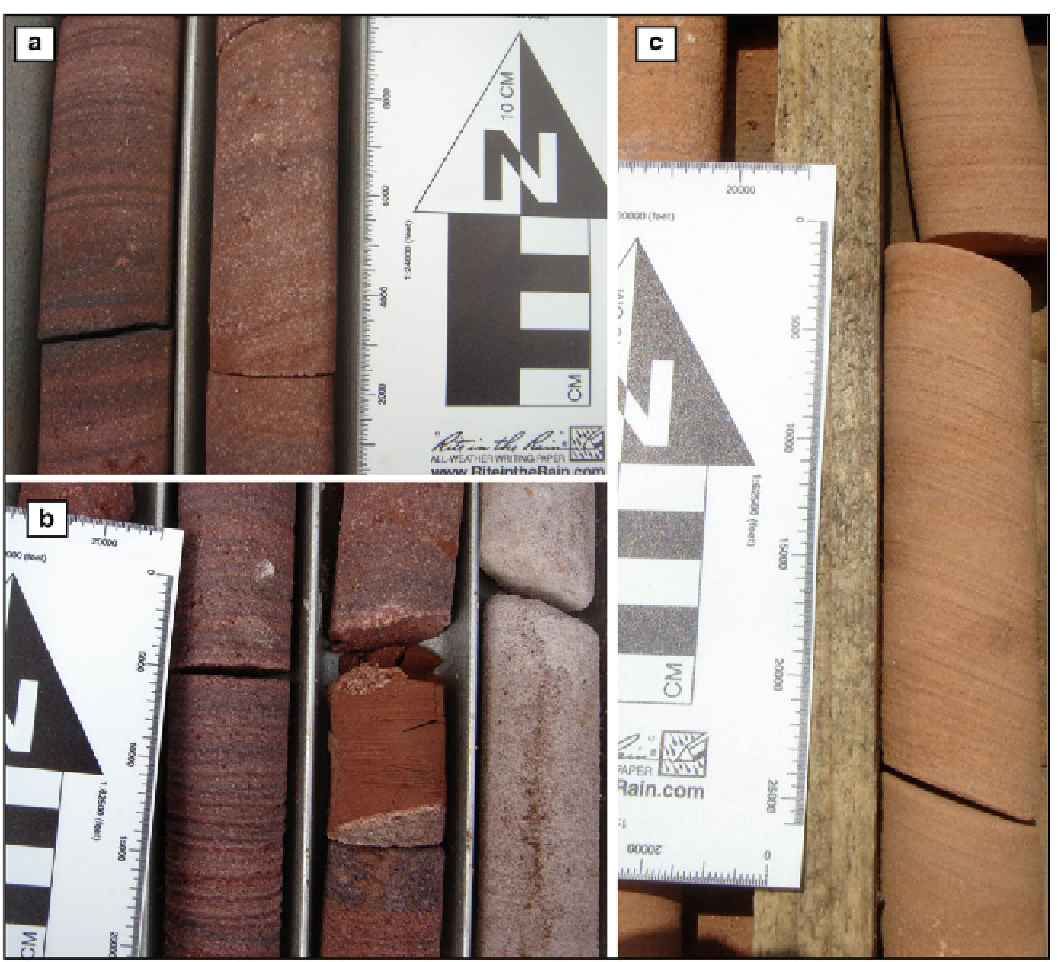Geology Reference
In-Depth Information
Fig. 9.6
Sandstone Lithofacies. A. LF5b, unit C2, core 154-X001; B. LF5b, with small lens of LF7 (center), unit C2, core 154-X002; C. LF5a,
core 157-X017, interpreted as aeolian dune foresets
grayish red (10R 4/3) to light brownish gray (5YR 6/2),
whereas LF8B is more oxidized in appearance, ranging
from pale reddish brown (10R 5/4) to light red (5R 6/6) to
pale yellow (5Y 8/3) (Fig.
9.7
). Minor to moderate bioturba-
tion is present. Dewatering structures, including pipes and
dish structures are present in some localities and desiccation
cracks are locally abundant, particularly in LF8B (Fig.
9.7d
).
White bedded chert bands are present locally and are com-
monly wavy and deformed. Thin wave and current ripple-
laminated siltstone beds are very commonly interbedded
with the horizontally laminated siltstones and mudstones
(Fig.
9.7e
). Small-scale horizontally oriented stylolites are
observed locally (Fig
9.7a
). Ostracodes and conchostracans
are present locally and are quite common in certain beds.
Small, disarticulated fish bones are moderately common,
along with rare articulated small fish skeletons.
LF9
comprises laminated siltstones and claystones
containing rare to abundant isolated granule to cobble
sized clasts (Fig.
9.8
). Clasts are dominantly pebble-sized,
angular to subrounded and represented by a wide range of
lithologies, including red sandstone, limestone, basalt,
quartzite, granite and foliated metamorphic clasts. Several
clasts were observed with striations. Thin, fine-grained sand-
stone lenses are also present. A very distinctive chocolate

Search WWH ::

Custom Search